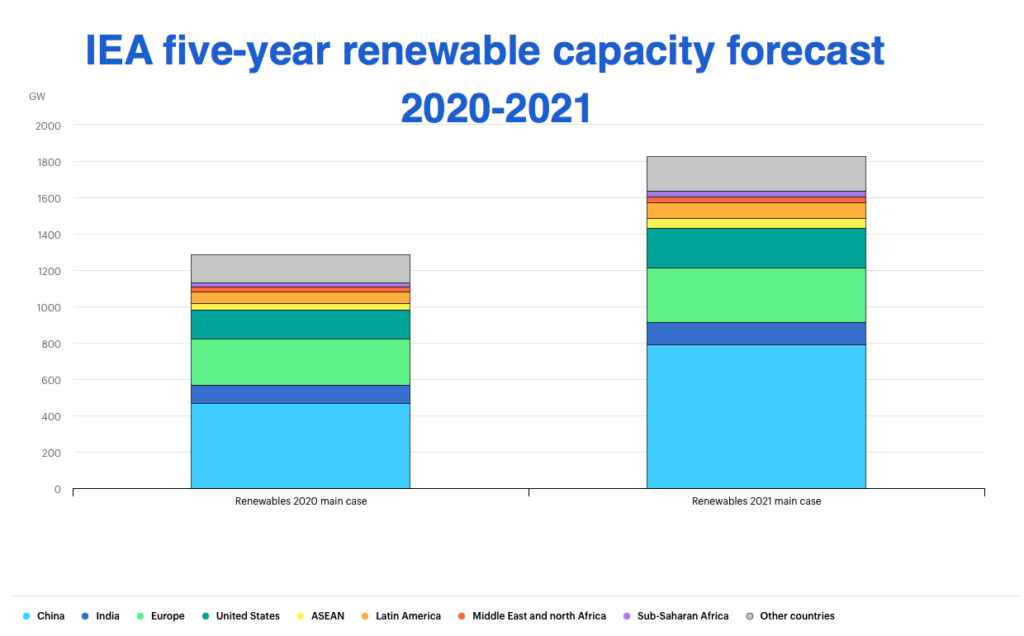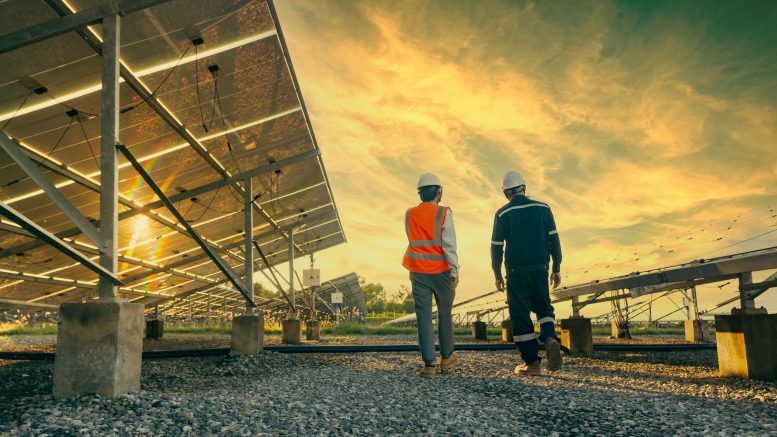Growth in renewable energy is set to hit an all-time record this year, but is still falling “well short” of what is necessary to reach net zero emissions by 2050, the International Energy Agency says.
New renewable power capacity is forecast to reach 290 gigawatts (GW) by the end of 2021, surpassing last year’s record of 280 GW, said the IEA in its annual review of renewable energy. This compares with current fossil fuel and nuclear power capacity of 4,800 GW.
Soaring commodity prices, however, are driving up the cost of producing and transporting solar panels and wind turbines, which may reduce investments in the short term, the agency said.
The price increases have cancelled out some of the cost falls of recent years in the renewable sector. If they continue next year the cost of wind power will return to levels last seen in 2015, and two to three years of cost falls in solar power could be wiped out.
Heymi Bahar, lead author of the report, noted that commodity prices are not the main obstacle to renewables growth. Permitting is the main barrier to new wind energy projects around the world, which means new policies are needed to expand use of solar power for consumers and industry.
Gear change
“We need a gear change to meet net zero,” he said. “We have already seen a very important gear change in recent years but we need to move up another gear now. It is possible, we have the tools. Governments need to show more ambition, not just on targets but on policy measures and plans.”
By 2026, the agency predicts global renewable capacity will be more than 60% higher than 2020 levels, an amount equivalent to the current total global power capacity of fossil fuels and nuclear combined, it said.
The IEA also said that China, the world’s biggest emitter, is driving the global switch to renewables. The country is expected to reach 1200 GW of total wind and solar capacity in 2026, four years sooner than its target date.

India, the world’s third-biggest emitter, is set to double its new renewable electricity installations in the years to 2026, compared with the 2015-2020 period. The target – set out at Cop26 – of reaching net zero by 2070 is also regarded as too weak by many.
“The growth of renewables in India is outstanding, supporting the government’s newly announced goal of reaching 500GW of renewable power capacity by 2030 and highlighting India’s broader potential to accelerate its clean energy transition,” IEA executive director Fatih Birol said in a statement.
To speed up the shift to clean power, governments need to boost support for renewables by addressing key barriers to their implementation, including incentives for investments, grid integration, insufficient remuneration, social acceptance issues and inconsistent policy approaches.


Be the first to comment on "Renewables adoption speed still too slow to limit climate crisis — IEA"